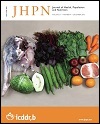Influence of Protein Intake from Haem and Non-haem Animals and Plant Origin on Inflammatory Biomarkers among Apparently-healthy Adults in Greece
DOI:
https://doi.org/10.3329/jhpn.v31i4.19992Keywords:
Diet, Haematocrit, Inflammation, Protein intake, GreeceAbstract
Intake of different types of protein may be associated with differences in biomarkers among various populations. This work investigated the influence of protein intake from haem and non-haem animals as well as protein from plants on haematological and biochemical parameters in inflammation among apparentlyhealthy adults living in Greece, a Mediterranean country. Four hundred and ninety apparently-healthy subjects (46±16 years, 40% men), who consecutively visited Polykliniki General Hospital for routine examinations, voluntarily agreed to participate in the study (participation rate 85%). Demographic, anthropometric and lifestyle characteristics were recorded. Participants completed a valid, semi-quantitative food frequency questionnaire. Protein intake was classified into three sources: protein from haem animals, protein from non-haem animals, and protein from plant origin. Fasting blood samples were taken from all participants; uric acid, creatinine, lipids, cystatin C, haptoglobin, haemoglobin, haematocrit, iron, ferritin, white blood cells, monocytes, platelets, and C-reactive protein were measured. Protein intake from only haem animals was associated with increased haemoglobin and haematocrit levels (p<0.05) whereas intake of protein from non-haem animals and plant origin was not associated with the investigated haematological and biochemical markers of low-grade chronic inflammation when lifestyle factors and overall dietary habits were taken into account. Intake of protein from only haem animals seems to be consistently associated with haematological markers. The confounding role of dietary habits and lifestyle variables on the tested parameters deserves further attention in future research.
DOI: http://dx.doi.org/10.3329/jhpn.v31i4.19992
J HEALTH POPUL NUTR 2013 Dec; 31(4): 446-454
Downloads
515
370

